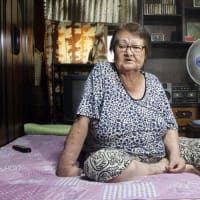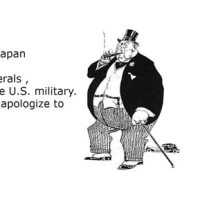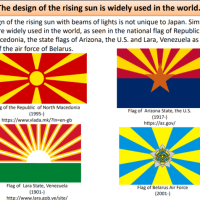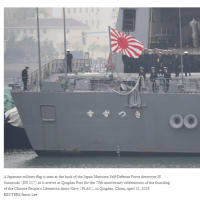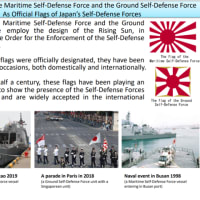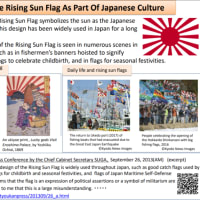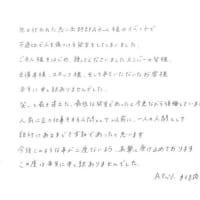フォロー
Hiroko Tabuchi認証済みアカウント
@HirokoTabuchi
Grandma on Feeding Tube Without Consent Symbolizes Japan
By Kanoko Matsuyama - Jul 24, 2013 5:00 AM GMT+0900
どうかなあ、麻生さんなんかは、
へえ、そうなんだあ?
下らない文化論でお茶を濁すのはやめよう。
これは、相談があってしかるべき。
死んだ父親は日赤に入院していたが、治療の変更があるたびに、電話がかかってきて承諾を求めていた。
でも、ちょっと元気にはなったわけだ。
アメリカでは、原則 胃ろうなどしないで、死なせてあげるわけか。麻生ちゃんの理想だろうね。
これはあたりまえで、生かし続ける援助を取りやめれば殺人になる。
もっとも、英では、”さっさと老人に死んでもらう”制度をすでに採用、
Sentenced to death on the NHS
Patients with terminal illnesses are being made to die prematurely under an NHS scheme to help end their lives, leading doctors have warned.
効率的というか、なんというか。
しかし、アメリカやイギリスだと、チューブもなく、そのまま死なされているかもしれない。
これは可笑しな数字だなあ。アメリカでは、健康保険にはいっておらず、治療を受けるのを控えるひともいて、かつ病気や怪我、は豊かな国のなかでは一番多いし、
Why Is the United States So Sick?
この記事によると、延命治療もそこそこで切り上げるのに、、健康分野に日本の倍以上も金を費やしているの?
誰にどう費やしているのだろうか?病院の経費が滅茶高いとか?
記者の話を整理すると、言いたいのは、たぶん、
といったところか。私は、1)2)は賛成、3)はどちらかというと反対かな。
賛否はあるだろうが、チューブ延命を原則しないというアメリカの話を出すと話が余計に混乱する。
西洋、欧米にみならってやればいい、という先入見があるから、議論が混乱してしまうのだ。
Hiroko Tabuchi認証済みアカウント
@HirokoTabuchi
Kanoko Matsuyama on the hard decisions & realities we face in #Japan as we take care of the elderly's growing ranks http://bloom.bg/15Gaiq8
Grandma on Feeding Tube Without Consent Symbolizes Japan
By Kanoko Matsuyama - Jul 24, 2013 5:00 AM GMT+0900
In Japan, there’s not much talk about death. Living wills, or even discussions about end-of-life decisions, are rare.
どうかなあ、麻生さんなんかは、
、終末期医療の患者を「チューブの人間」と表現し、「私はそういう必要はない、さっさと死ぬんだからと(遺書を)書いて渡してある」と公言しており、そうしたら、英語圏では非難されたわけであるが。
The use of feeding tubes at the end of life, which is not conventional practice in the western world, is a way of life in Japan.
へえ、そうなんだあ?
‘Honne and Tatemae’
That’s because Japanese tend to protect other people’s feelings to avoid conflict and enjoy harmony. It’s the base of the concept called “Honne and Tatemae” in Japanese: the difference between personal feelings and what people express publicly.
下らない文化論でお茶を濁すのはやめよう。
Grandma’s stomach through her nose. My mom was furious. Someone outside the family -- a nurse -- had made a decision that, as my mother saw it, could keep Grandma alive in an unnatural way for years.
My parents weren’t prepared for this.
これは、相談があってしかるべき。
死んだ父親は日赤に入院していたが、治療の変更があるたびに、電話がかかってきて承諾を求めていた。
Mom stormed off to find the nurse responsible for the tube and chided her for not trying hard enough to feed Grandma. Grandma had choked on her dinner the previous evening, the nurse responded.
The next day, the color had returned to my grandma’s face and she was more responsive, shouting “cold” when the family touched her with cold hands. She also smiled more frequently when the family talked about her past and mumbled words as if to join the conversation.
“We were so surprised,” Mom said. “She was probably getting more energy from the drip than from the mushy food she was getting though the mouth.”
でも、ちょっと元気にはなったわけだ。
Of the quarter-million patients in Japan estimated to be fed through a tube like Grandma’s, more than 90 percent are bedbound, according to the survey by Japan’s hospital association. They are, on average, 81 years old and nourished via tube for 2.3 years.
In the U.S., feeding tubes are more commonly used in patients with swallowing difficulties, such as those with neurologic conditions after a stroke, or people treated for cancer of the oral cavity or esophagus, according to the American College of Gastroenterology. For late-stage dementia patients, who have lost their ability to swallow, the intervention is controversial, the group says. It recommends assessing life expectancy and quality of life before making a decision.
Quality of Life
The American Academy of Hospice and Palliative Medicine and the American Geriatric Society recommend severely demented patients be fed by mouth. In Japan, the Geriatrics Society published guidelines in June 2012 that gave doctors leeway to reduce nutrients and remove feeding tubes with consent of the patient or the family, responding to public concern about quality of life.
アメリカでは、原則 胃ろうなどしないで、死なせてあげるわけか。麻生ちゃんの理想だろうね。
Japanese doctors are reluctant to stop life support on terminal sufferers because they could be prosecuted for killing patients. Doctors at Imizu City Hospital in Toyama, central Japan, were investigated for murder after the hospital found in 2006 that they had removed respirators of terminally ill patients, which led to more public discussion about setting rules for death with dignity.
これはあたりまえで、生かし続ける援助を取りやめれば殺人になる。
もっとも、英では、”さっさと老人に死んでもらう”制度をすでに採用、
Sentenced to death on the NHS
Patients with terminal illnesses are being made to die prematurely under an NHS scheme to help end their lives, leading doctors have warned.
効率的というか、なんというか。
I don’t want Grandma to die. She’s comfortable and still seems to have some connection with her shrinking world. And her children -- my father Takashi, my uncle Tsutomu and my aunt Megumi -- look so happy to see her during their frequent visits.
しかし、アメリカやイギリスだと、チューブもなく、そのまま死なされているかもしれない。
But Japan -- which spent the equivalent of 9.6 percent of its gross domestic product on health care in 2011, about half the 18 percent spent in the U.S. -- won’t be able to afford to give me the same level of care. Japanese born in 1955 and after will get fewer benefits -- pension, health care and elderly care -- than they have paid in taxes and contributions, according to a study by the Cabinet Office’s Economic and Social Research Institute in January 2012.
これは可笑しな数字だなあ。アメリカでは、健康保険にはいっておらず、治療を受けるのを控えるひともいて、かつ病気や怪我、は豊かな国のなかでは一番多いし、
Why Is the United States So Sick?
この記事によると、延命治療もそこそこで切り上げるのに、、健康分野に日本の倍以上も金を費やしているの?
誰にどう費やしているのだろうか?病院の経費が滅茶高いとか?
記者の話を整理すると、言いたいのは、たぶん、
1) 終末治療については、麻生氏のように、遺言なりで、どうしたいか各々明確にすべき。
2) 胃ろうなどのチューブによる延命は、家族がある場合は、少なくとも家族の同意を得るようにすべき
3) かりに、胃ろうなどの延命治療を選んだ場合、国にもっと補助金をだしてもらいたい。
といったところか。私は、1)2)は賛成、3)はどちらかというと反対かな。
賛否はあるだろうが、チューブ延命を原則しないというアメリカの話を出すと話が余計に混乱する。
西洋、欧米にみならってやればいい、という先入見があるから、議論が混乱してしまうのだ。










